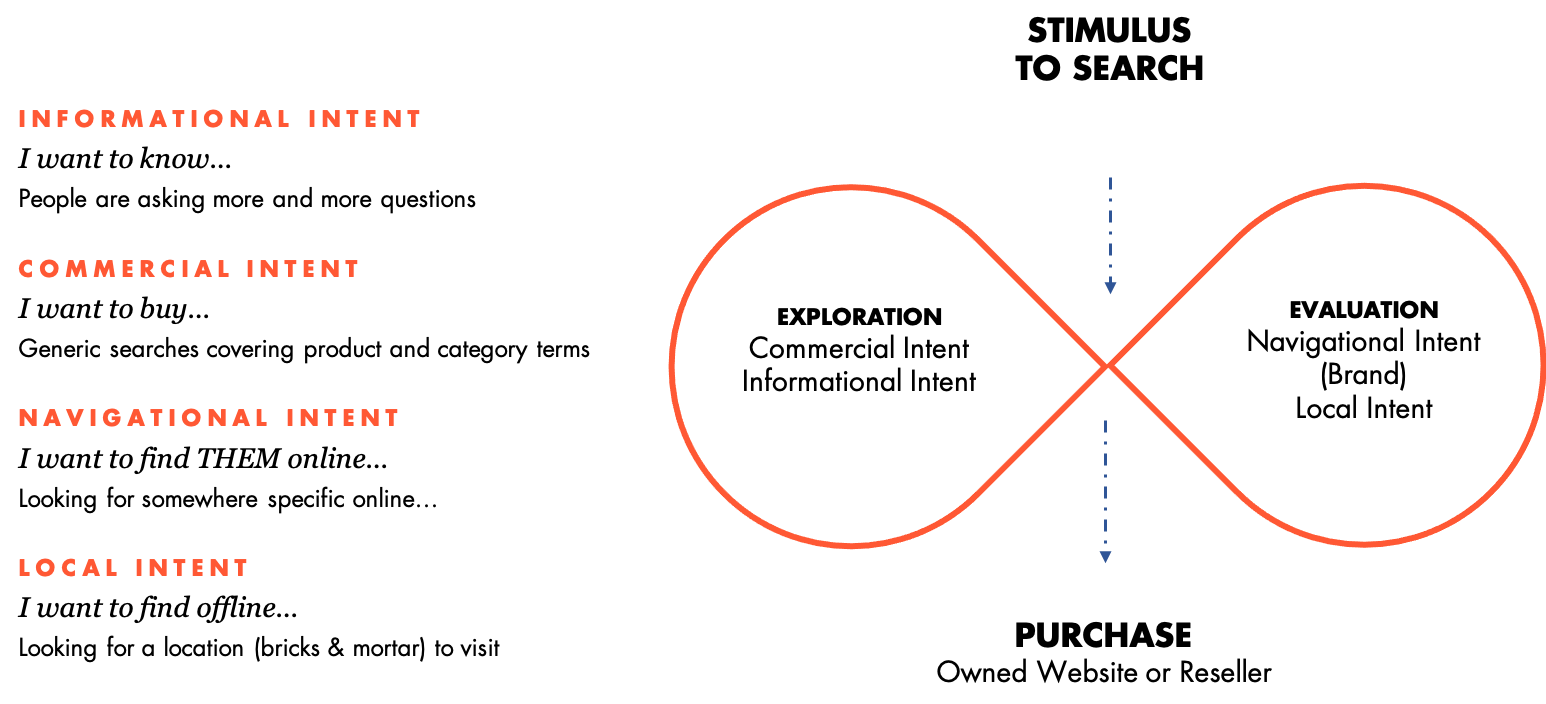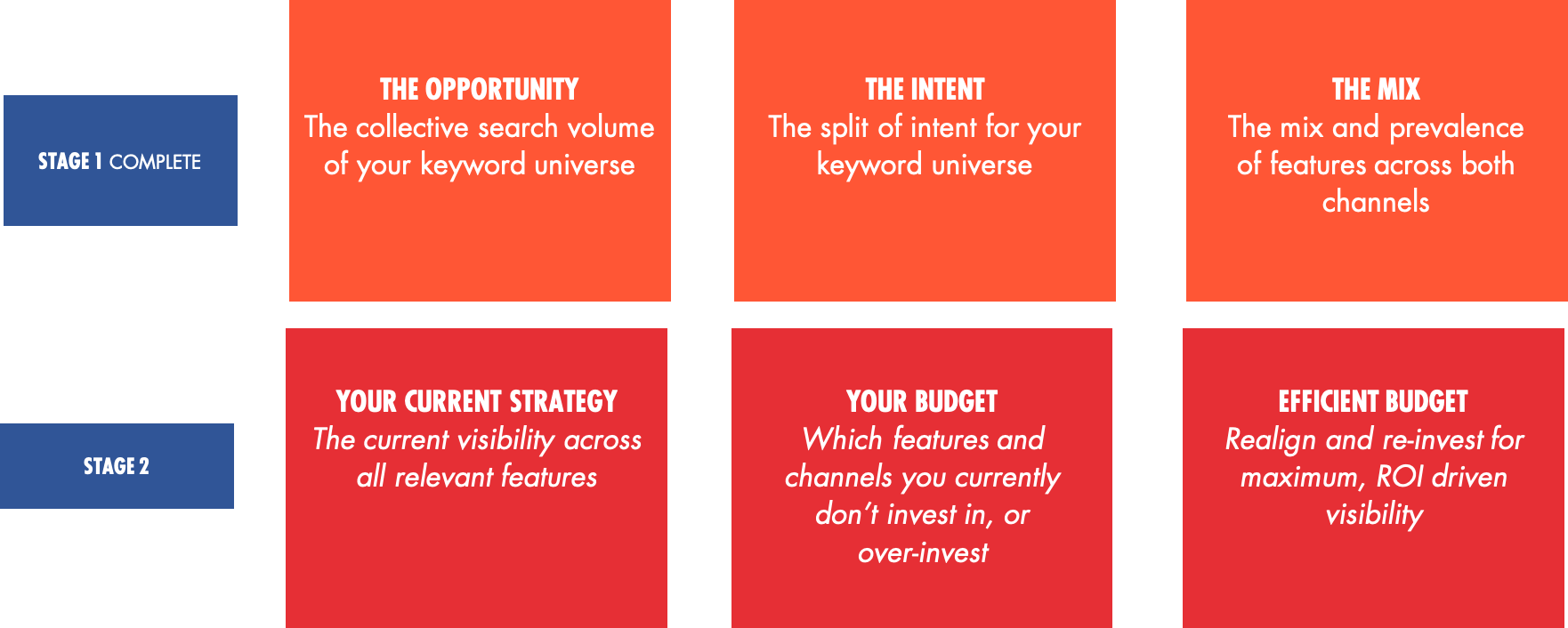1. Understand your new landscape
The landscape of Google is no longer as binary as a couple of paid ads at the top, with organic listings below. The above-the-fold experience is richer, more dynamic, and more personalized than ever. For every individual search, we are presented with a range of information-rich features that are all designed to provide the searcher with a bespoke experience to answer the intent of the search, not the keyword.
Take the below example – the same user searching for ‘Ugg Boots’ and ‘Best Ugg Boots’ and see the variation and somewhat surprising mix of landscape features with the inclusion of the term ‘best’:
This shows a number of important differences:
- The term ‘Ugg Boots’ presents a landscape that is commercial, focussing on traditional paid ads, shopping ads and traditional organic listings, with the Ugg brand site and Office.co.uk (an official reseller) occupying the first 3 organic listings as commercial websites.
- With the inclusion of the term ‘best’, Google has now presented a very different mix of landscape features – perhaps surprising that the map pack is presented as the primary feature (local intent) with People Also Ask as the secondary feature (informational intent)
- On the second screenshot, the first organic listing is not a brand or commercial website but a publication (sun.co.uk) with an information content piece around the ‘best Ugg boots for 2020’.
This example shows us clearly that Google is presenting features for a user based on what Google has learned of the users’ past search behavior. Google is mapping features against personalized intent.
We know that in search, a combination of reach and engagement drives results but how do we maximize reach and engagement in a world where every user could experience our brand totally differently on the search landscape? Or not at all depending on their intent? Only by understanding intent can we begin to unravel our opportunity.
2. You Need to Understand Intent
Google has recently released a report called "Decoding Decisions: Making sense of the messy middle." Affectionately known as ‘the messy middle’, Google has established that search journeys are no longer linear but in fact a loop between 2 phases: exploration (expansive search behavior) and evaluation (reductive search behavior).
Purchases can happen at any point along this path, and users may loop between these 2 distinct behaviors many times before they purchase. By mapping intent against this model, we can understand what consumers need from brands to inform their buying decisions at any given point along the path to purchase.

A search strategy mapping against intent is critical for success in the future - we know that Google is mapping features against intent in any combination determined by the user’s individual intent, therefore how do we ensure we’re visible across all intent categories and all features, in the most effective and budget-efficient way?
3. Understand Your Channel and Landscape Feature Mix
As seen in the above example we have a landscape that is a rich channel mix, all of which have a wealth of strategic tactics within to build visibility. If we want to build a search strategy that will produce maximum visibility above the fold, we cannot focus on channels in isolation as this means there’s a wealth of other channel tactics and features that competitors will be generating revenue from if you’re not present.
Every brand is different. Each brand will have an individual keyword universe, a different audience, a different business proposition and a different vision for the future. Therefore, it’s vital to understand your own landscape.
- How are people searching in your category?
- What split of intent is there in your keyword universe?
- What mix of features is most prevalent across your 4 intents?
- Do you have a strategy in place to target those features to ensure visibility for any intent combination?
- Are you spending on the right channels and therefore landscape features?
The last question is key. If the answer is no, connected search will ensure you know how to optimize your budget for maximum effective reach, results, and revenue across both channels.
4.Understand How To Optimize Your Budget
The analysis across the landscape and intent groups, in addition to building the bespoke view of the channel and feature mix for our brand, means we can then understand where we should be investing our budget to capitalize on previously untapped landscape opportunities.

In summary
The 2020 digital holiday shopping season is shaping up to be the biggest we have seen. The opportunity for brands within search who power both acquisition channels in a connected way will ensure they maximize on potential revenue.
Whilst re-imaging your holiday search strategy to combine both channels could be a challenge, now is the time to start to think strategically about the landscape – the landscape has evolved dramatically over the years and the opportunities for growth are huge if you’re willing to rethink your holiday search strategy in an equally as evolved way.
To wrap up, powering your holiday search strategy for Q4 2020 needs to start here:
- Your New Landscape – What does your landscape look like for your brand and customer? Everyone is different and every landscape is different so start to understand how your customers’ intent is shaping the landscape for your brand
- Mapping against intent - By understanding and optimising to intent the same way that Google does, we can maximise reach in the most efficient and effective way possible, drive engagement by matching intent to content & channel to produce a cross channel, fully integrated search strategy with user intent at its core
- The channel & feature mix – Is your search strategy targeting all the feature opportunities on your landscape? Only by having an integrated channel view of the landscape can you begin to shape your strategy for maximum visibility above-the-fold
- Optimize your budget – Map your current spend against your new landscape and optimize in line with where the largest, and perhaps most importantly efficient ROI-driven opportunities.

